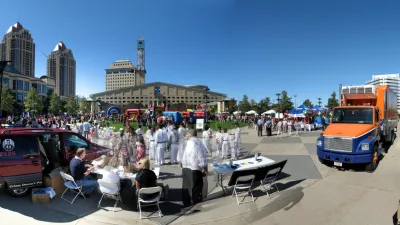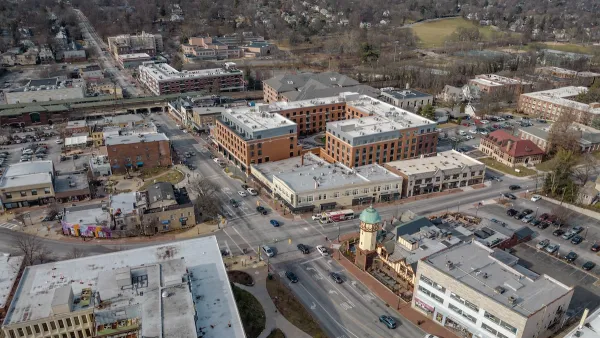In the Toronto area, the region's suburbs have evolved in ways that make them fundamentally different from their outdated postwar image. Yet the ways we think and talk about the suburbs haven't kept up with this new reality.

"The suburbs have the region’s majority share of population and job growth and are home to major infrastructures such as the airport and universities," say Sean Hertel and Roger Keil. "On these bases suburbia can no longer be considered subordinate to the City of Toronto. But still it is. Prejudices have power over facts – clouding our view of what the suburbs truly have become and why, most importantly, that should matter."
Hertel and Keil, who have been engaged in a three-year effort to develop "new approaches for planning, building, servicing and governing Toronto’s ever-growing and diversifying periphery", have just issued a new report that describes their recommendations for shaping the region's suburbs for their "urban future".
"The suburbs have become, like the city centres before them, the new arenas for forming and contesting politics, modes of governance, ways of life, and the forms and notions of community," they conclude. "Taken one step further, the suburb has become the new city. And a new kind of city – a 'regional city.'”
FULL STORY: Look for Toronto’s urban future in the booming suburbs

National Parks Layoffs Will Cause Communities to Lose Billions
Thousands of essential park workers were laid off this week, just before the busy spring break season.

Retro-silient?: America’s First “Eco-burb,” The Woodlands Turns 50
A master-planned community north of Houston offers lessons on green infrastructure and resilient design, but falls short of its founder’s lofty affordability and walkability goals.

Delivering for America Plan Will Downgrade Mail Service in at Least 49.5 Percent of Zip Codes
Republican and Democrat lawmakers criticize the plan for its disproportionate negative impact on rural communities.

Test News Post 1
This is a summary

Test News Headline 46
Test for the image on the front page.

Balancing Bombs and Butterflies: How the National Guard Protects a Rare Species
The National Guard at Fort Indiantown Gap uses GIS technology and land management strategies to balance military training with conservation efforts, ensuring the survival of the rare eastern regal fritillary butterfly.
Urban Design for Planners 1: Software Tools
This six-course series explores essential urban design concepts using open source software and equips planners with the tools they need to participate fully in the urban design process.
Planning for Universal Design
Learn the tools for implementing Universal Design in planning regulations.
EMC Planning Group, Inc.
Planetizen
Planetizen
Mpact (formerly Rail~Volution)
Great Falls Development Authority, Inc.
HUDs Office of Policy Development and Research
NYU Wagner Graduate School of Public Service



























